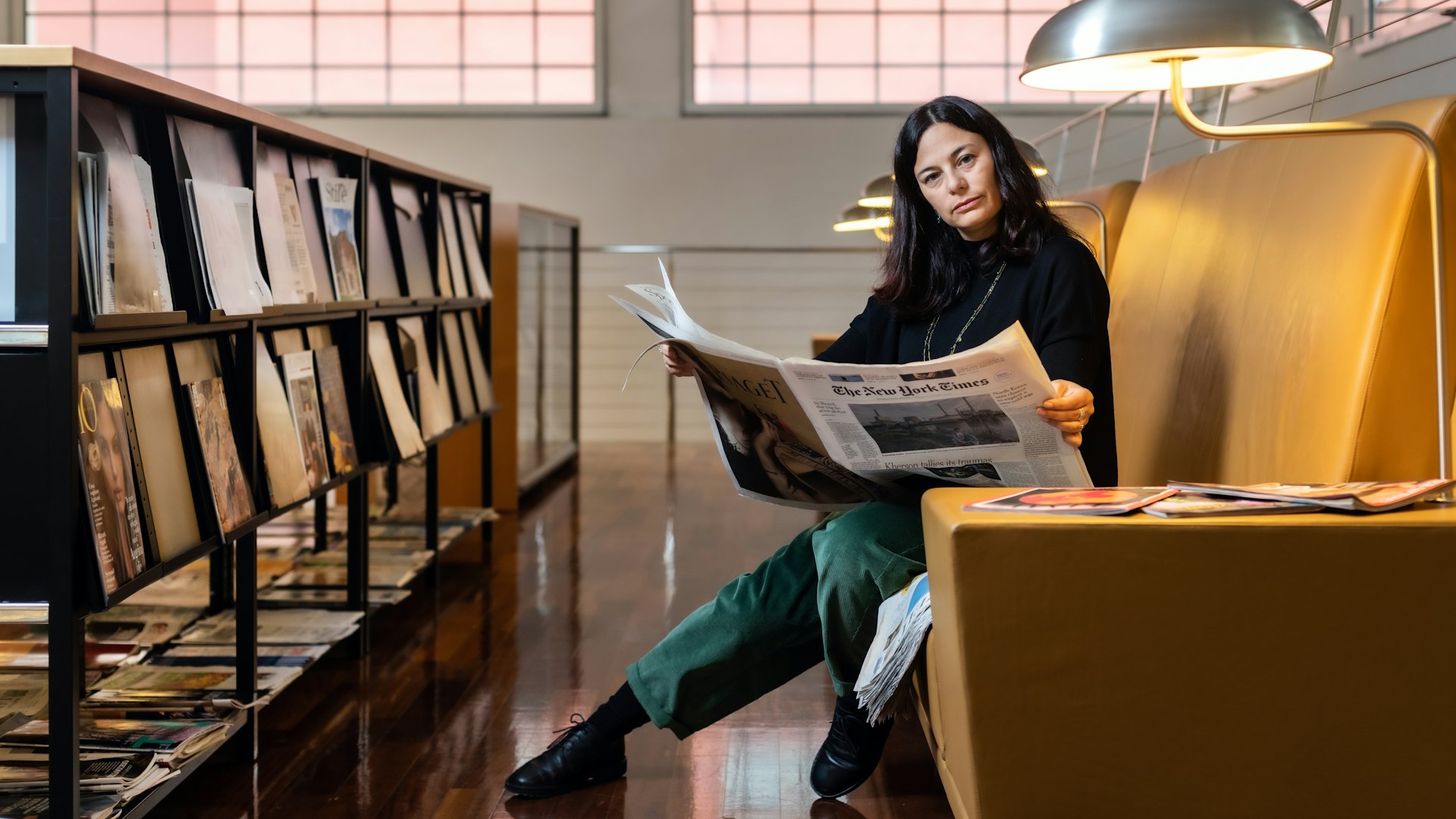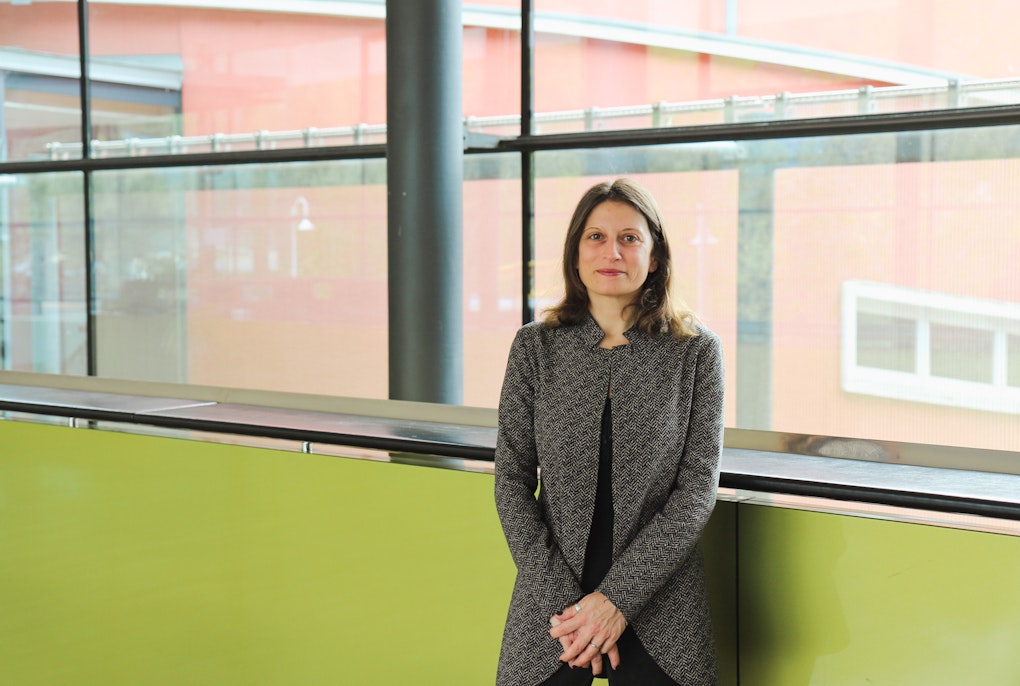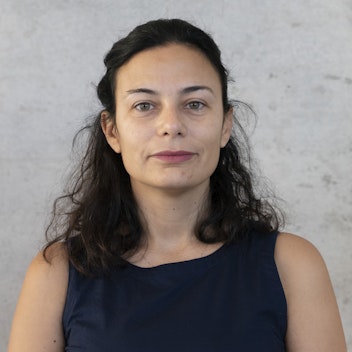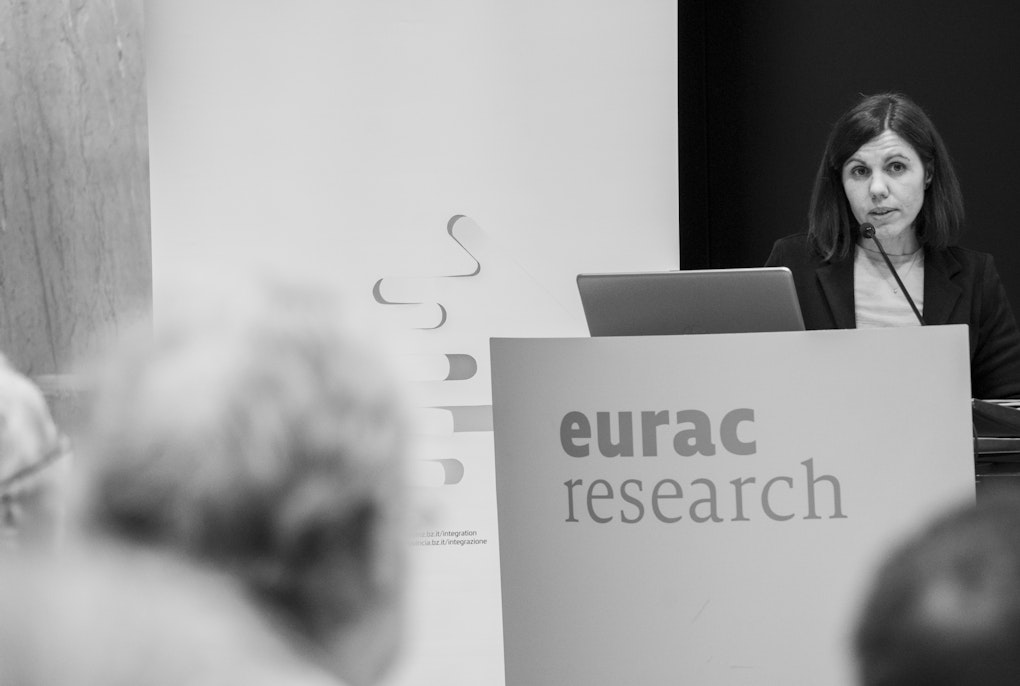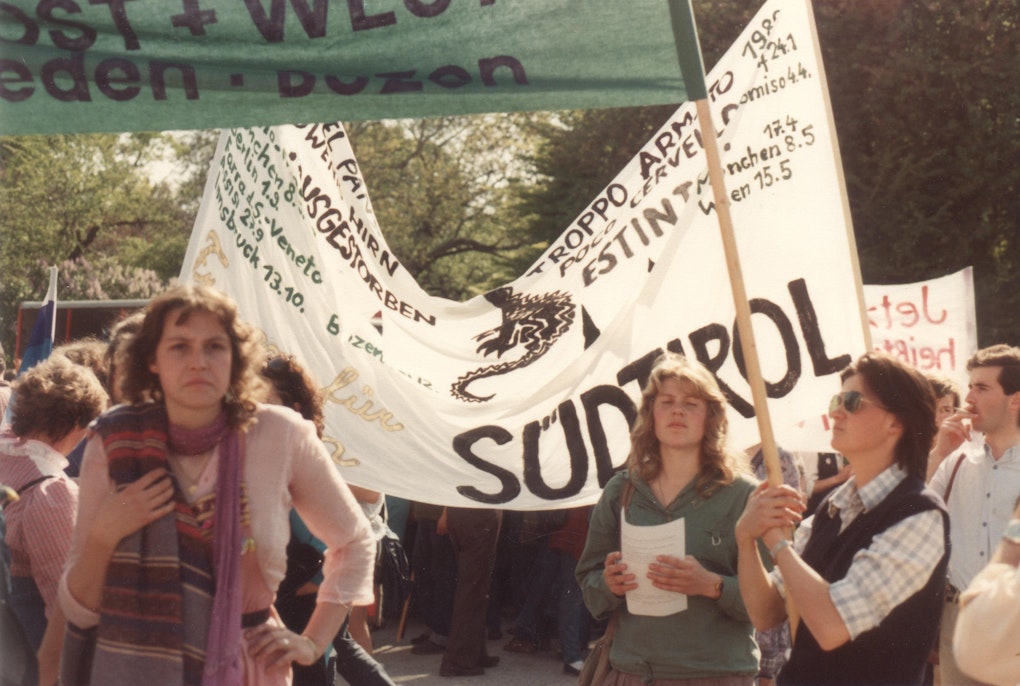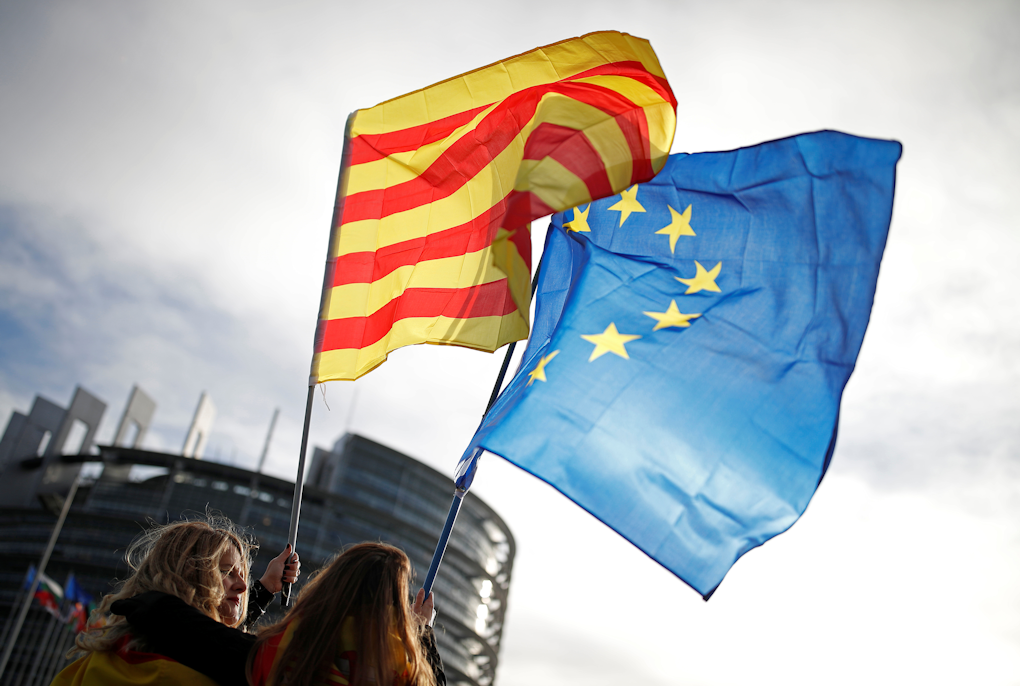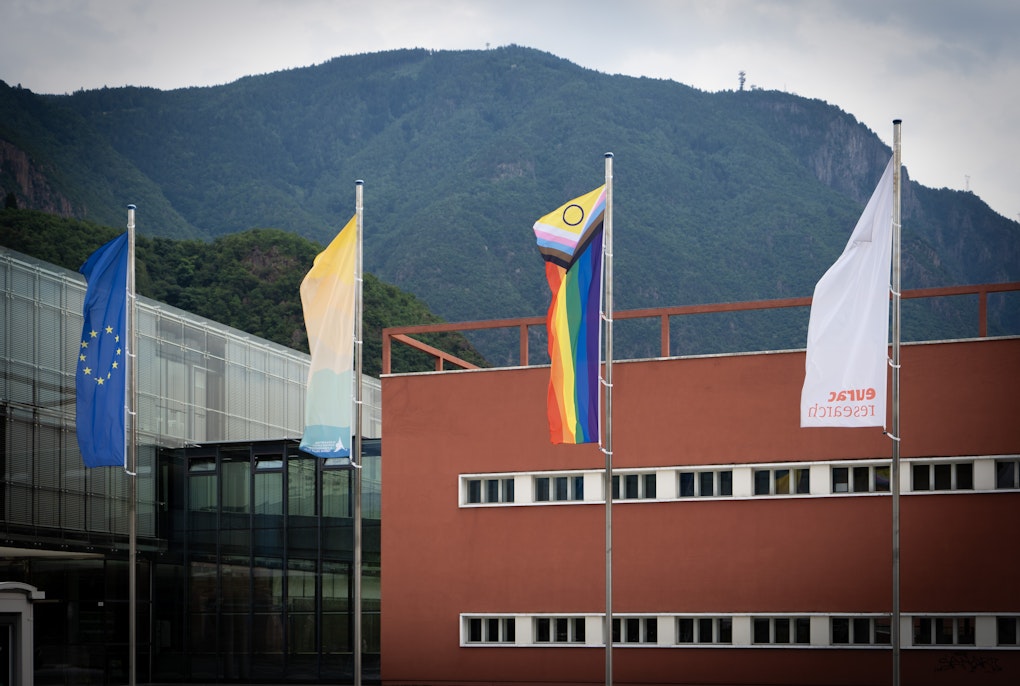magazine_ Feature
The “Fake News” System
Disinformation is gradually seeping into public discourse and endangering our democracy. Elisa Piras digs deep into the media quagmire, meticulously scouring the literature and following current debates in society and politics to explore the mechanisms behind it.
“Whatever we know about our society, or indeed about the world in which we live, we know through the mass media.” When Niklas Luhmann, German sociologist and social theorist, put these lines at the beginning of his much-cited work “The Reality of the Mass Media”, he probably had little idea of how the world, and especially the media, would change. Namely, that this knowledge about the world now also has a good portion of fake news mixed in with it. Elisa Piras is a political scientist at Eurac Research’s Center for Advanced Studies. She is concerned with the question of how disinformation and fake news undermine our democracy and what dangers they pose to our already fragile society and how there actually is a system behind fake news.
"I'm trying to understand how fake fews infiltrates public discourse and how it changes the way that discourse is conducted,“ Piras explains. “There are usually economic and political agendas behind fake news. The goal is to influence individual opinion and consensus, which ultimately drives political decisions and trust in institutions. What is fake news? Even the definition of the term is subject to countless interpretations. Therefore, in order to actually make the “fake news” system and its effect tangible, a theoretical classification is needed in addition to empirical research, which ensures everyone is talking about the same topic.”
Fake News as a political weapon
Fake news has always existed, but most of us probably came into contact with the term in 2016. Two events were indicative of this, namely the Brexit referendum and the U.S. presidential election. And it is also these two examples that most clearly illustrate the purposes for which fake news is used. There is, for example, Donald Trump's domestic sweep to discredit all the media that reported on him according to journalistic standards. Or the use of fake news as a targeted political weapon against other states. Even before Russia moved with heavy artillery toward neighboring countries, it had already been bringing rather different guns into position by using fake news to harm Western democracies. “In times of war, as we are currently experiencing, the spread of fake news is the order of the day. It is both internally and externally directed and emanates not just from governments, but also from other agents who have an interest in the conflict,” says the political scientist.
“Our brains love cognitive shortcuts. A fact that suits fake news because it delivers simple unambiguous statements.”
Elisa Piras
Where every day is Groundhog Day
“It is now well established that a large number of fake news stories have been broadcast from Russia in recent years. There is talk of so-called fake news factories, entire armies of trolls and bots, whose connection to the Russian government has not yet been proven, despite great efforts.” Consequently, the “Pizzagate” smear operation is also believed to have originated in Russia. According to the conspiracy theory, Hillary Clinton, who was a presidential candidate at the time, ran a child pornography ring out of the basement of a Washington pizzeria. Outrageous nonsense, but: “the false news has spread over 4chan, Reddit, Facebook and Twitter tens of millions of times even though it is not based on a shred of evidence and still proves to be resistant to this day. In recent years, it has been re-shared again and again only now, it’s not on Facebook, but on TikTok, meaning that it’s reaching a new audience too young to remember the debate a from few years ago,” Piras explains.
Subtle and therefore dangerous
Deepfakes - photos, audio or film recordings created using artificial intelligence - are even more difficult to debunk, she says. Today, no special technical knowledge is needed to replace a person’s face or manipulate a voice in a video. A smartphone and freely available software are enough. If a deepfake is circulating, it could be pointed out that it is manipulated content, but firstly, only a fraction of recipients also see the correction and secondly, studies show that even those who see it are rarely prepared to revise their opinion.
Back now to the fake news campaigns we mentioned before. Are Brexit and Trump now attributable to fake news? “No. Fake news most certainly complicates democratic discourse, but it does not have a decisive impact. It would be a very truncated view to attribute the election of a Donald Trump to fake news, and current scientific findings also underline that voting behavior still depends on socioeconomic factors,” Piras wants to emphasize. What can be said with certainty, however, is that fake news has contributed to the formation of specific conspiratorial subcultures, which ultimately led to actions such as the storming of the Capitol in Washington. The influence of these subcultures remains under-researched to this day, she goes on to say. “Very many scholars tend not to engage with the discourses of these subcultures because they are the discourses of a minority. Only when xenophobic or misogynistic opinions are suddenly expressed quite openly do people show surprise. We must be aware that these discourses are in fact the breeding ground for thoroughly dangerous, subversive movements, just think of the of the Incel Internet subculture or of groups that openly question the democratic principle of equality. Such ideas do not form on their own but thrive on exchange and influence."
Learning to be critical
Where do such opinions come from, how are they nurtured, and what are the effects of their dissemination? Answering these questions must be an interdisciplinary endeavor because it's not just about how fake news is put into circulation, how it comes about, or the technical details behind it. “Each and every one of us has the right to express our own opinion, but we also need to understand when it is appropriate to impose limits and restrictions on this right,” says the political scientist. She says it is important to be very sensitive here because the mere existence of fake news should not lead to censorship or the closure of certain online services. It is more important, she says, to educate people about the mechanisms of fake news, and to do so without bringing out an argument on morals. “Our brains love cognitive shortcuts. A fact that suits fake news because they deliver simple unambiguous statements. With black or white, we don't have to plague our minds with shades of gray. Even on social media, we often find fake news alongside sports news or entertaining content we consume to pass the time. Why? Because the threshold of critical attention drops - as does when content is shared by trusted people,” Piras summarizes.
The good news is that being critical of news sources can be taught. In school, from parents and relatives, from role models. For what the above mentioned Luhmann also states: With all the information about the world conveyed by the media, one should always ask oneself how this information is produced.
About Elisa Piras
Elisa Piras is a senior researcher at Eurac Research’s Center for Advanced Studies. After receiving her PhD in Politics, Human Rights and Sustainability, her research focused on the philosophical theories of contemporary liberalism, with particular attention to issues of foreign policy and theories of public opinion.
